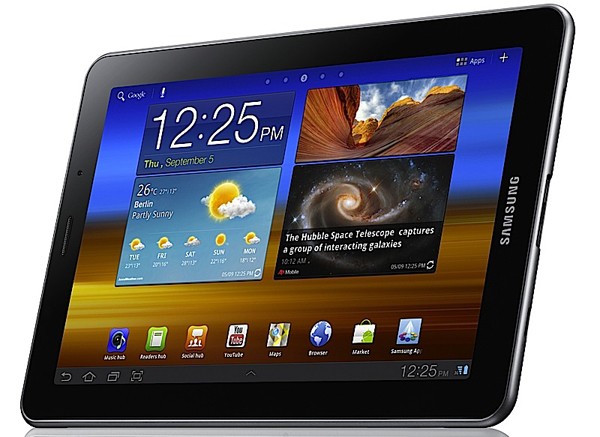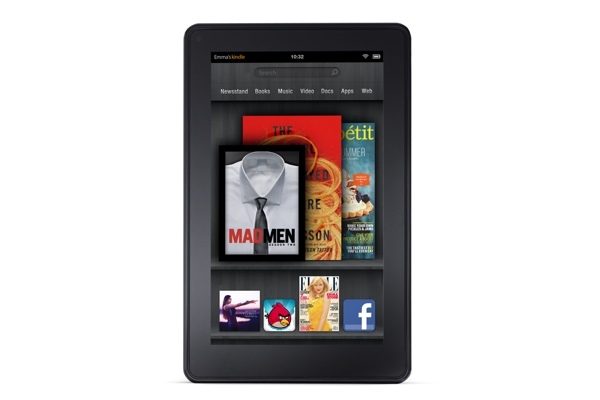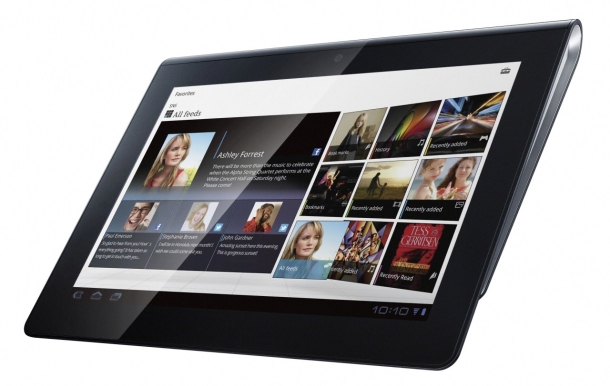Five years ago, launching a decent streaming platform took millions. Now? A teenager with a laptop can build something that reaches millions. That shift…
Gearburn’s Top Tablets of 2011
Tablets exploded onto the scene in 2011. The iPad 2, the previous benchmark by which tablets where judged suddenly found its back up against the wall when Motorola, Asus, BlackBerry and countless others trickled out of the development cycle. Here’s Gearburn’s roundup of the killer tablets of the year.
BlackBerry PlayBook
It made a splash, but for all the wrong reasons. The PlayBook is powerful, sturdy and excellent for content viewing but a chore in the usability department. Forced to sync to a BlackBerry phone in order use the email and calender? Come on. A tiny selection of PlayBook apps for a US$500 device (thankfully now US$200)? Not on your life. Weak sales have all but doomed the PlayBook to the bargain bin pile but thankfully, it runs DOS. This tiny inclusion of 30-year old OS turns a fairly stuffy tablet into a chocolate factory of touchscreen pleasures! Recommended for this feature only.
HP TouchPad
Ah HP, you came, you saw, you burned up in the atmosphere. The TouchPad is an exceptionally intuitive and hassle-free device, for those who have been lucky enough to touch one, let alone see one. It ran WebOS, had powerful 1.5Ghz CPU and possibly the best use of multi-tasking since Windows 95. HP TouchPad spectacularly failed earlier this year, causing an insane price drop of US$400 for certain models. Now, powerful US$200 tablets run amok and perhaps we can thank the HP TouchPad for that. RIP dear friend, despite being the second best-selling tablet in the US.
Samsung Galaxy Tab 7.7
Ladies and germs, the petite sibling of the Samsung Galaxy Tab 10.1 is must-have tablet. It’s roughly the same size as the PlayBook but oh so much friendlier to use. Honeycomb OS, a dual-core CPU and a stunning Super AMOLED screen delivers the superlative tablet experience. It’s priced lower than the iPad, is light in the hands and is one of our picks for tablet of the year.
Amazon Kindle Fire
It’s amazing what a bit of spit and polish and can do. Android, incontinent with heavily-tweaked builds leaking from every orifice, is the heart of soul of the Kindle Fire, albeit in slightly crippled form (oh go on, jailbreak it). The Kindle Fire is Amazon’s foray into tablet territory and the world’s biggest online book store has seemingly struck gold. It’s US$200, very nippy and works straight out of the box with very little configuration needed.
Asus Eee Pad Slider
A breath of fresh air, this is what the Asus Eee Pad Slider presents to the user. The screen is sublime, Android 3.2 is silky-smooth and the pull-out keyboard is a work of genius. Separating from the tablet crowd is nigh impossible but the Pad Slider pulls it off with aplomb. The keyboard presents an delightful level of tactile interaction for the user, turning the Pad Slider into a netbook with a flick of the wrist. It’s as expensive as most other tablets, therefore it comes highly recommended. The dedicated Nvidia Tegra 2 CPU cements its position as a graphics-hungry workhorse.
Akash
The world’s cheapest tablet is US$35 worth of third-world genius. It’s no steroid-bulked beast yet it manages to offer three hours of battery life, 32GB of ram and an Android 2.2 OS. Despite the reams of competitors now emerging from the cheap-as-hell tablet market, the Akash (meaning “Sky”) is performing exceptionally well, but good luck getting your hands on one.
Samsung Galaxy Tab 10.1
So it’s slimmer than the iPad, lighter and what else, faster? Honeycomb, the OS which powers the Tab 10.1 presents a rough transition for iPad owners but once they get used to the marvel of engineering which is Android, they will experience a level of customisation which is practically impossible to replicate on Apple’s tablet. The cameras great, battery life is close to nine hours and the screen is akin to holding a minute Samsung LED TV in your hands.
Sony Tablet S
Two years Sony, two years to hit the tablet market. Say it ain’t so. It is slick, though and feels like a very luxurious tablet. In every sense of the word the design echos the VAIO range of netbooks and laptops. Killer features include the ability to run PSone and PSP games, using the tablet as a universal remote control and gaining access to the Music Unlimited cloud service. Not bad for US$600.
Motorola Xoom 2
The Xoom was no smash-hit, but the Xoom 2 hopes to pick up the slack which Motorola’s tablet revelled in. The first Xoom was very heavy at 0.8kg, the Xoom 2 is now just slightly heavier than the iPad 2 at 0.6kg. Xoom 2 screen is 10.1 inches, covered in Gorilla Glass to prevent accidental scratches and smashes. A gig of RAM, dual-core CPU and a 5MP camera round off an expensive device which is still well worth considering.
Apple iPad 2
If you already own the iPad 2, than you know of its considerable powers. Apple’s tablet is a fast, friendly and powerful device which seemingly had no real competition. That was until the new crop of tablets from the competition we list above entered the fray. The holiday season will cut the wheat from the chaff; will the iPad 2 be left as last man standing in the genuine desirability stakes? Only time, and users eager to own Apple’s popular will paint the full picture.











